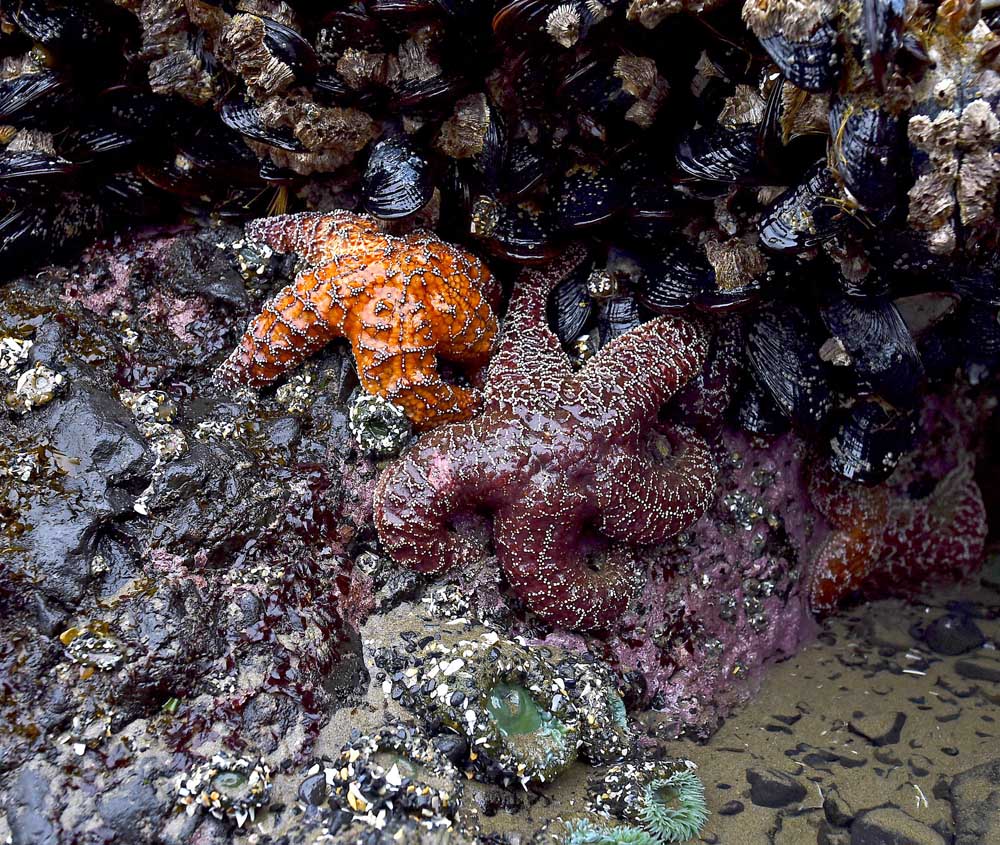Sea star wasting unusually high at Haystack Rock
Published 2:57 am Friday, February 16, 2018

- Sea stars at Haystack Rock in Cannon Beach have been hit hard by a wasting disease.
CANNON BEACH — A wasting disease is again plaguing sea stars at Haystack Rock — and it’s not clear why.
A survey in January found that 64 of the 247 sea stars monitored had symptoms. The spread of the disease in the sea star population — 26 percent — is higher than other locations on the West Coast.
The disease was first spotted in Washington state’s Olympic National Park in June 2013, and then shortly after on the coast from Alaska to Southern California. It didn’t appear at Haystack Rock until 2014, where a summer survey showed more than 70 percent of the population was affected. The population bounced back in 2015 when there was a sharp increase in the birth of baby sea stars.
“What we’re seeing is essentially a population still struggling to persist through this epidemic and only just beginning to recover,” said Eric Owen, the citizen science coordinator at the Haystack Rock Awareness Program.
How and where the wasting disease strikes has always been patchy, said Sarah Gravem, a postdoctoral student at Oregon State University who has studied the disease since the first outbreak. Part of what makes the disease so hard to research is its untraditional way of spreading.
“The reason it is so hard to understand is because the virus is in the water, and it can move so easily,” Gravem said. “It can survive in sea water for awhile, move with currents. We don’t have a smoking gun of why it pops up here or there, or why it went to California and Washington first.”
Over the past two years, Gravem said the percentage of sea stars affected by the disease at survey sites along the Oregon Coast have settled at closer to 10 percent.
The figures reported in Cannon Beach in January are some of the earliest for the year, Gravem said, but could possibly be a worrisome indicator.
“Some populations are recovering, but they aren’t out of the woods,” she said. “If another outbreak occurred, it’d be concerning for the survival of the whole species.”
Many questions still remain about what aggravates the disease and why some areas are affected more than others. Historically, die-offs have been associated with warm ocean temperatures, but Melissa Miner of MARINe — the Multi-Agency Rocky Intertidal Network — said the organization has not seen a correlation between higher water temperatures and sea star wasting.
“Other localized groups who conduct surveys felt they saw relationship, but we don’t see that as the case on the broad scale,” Miner said.
Haystack Rock, like many places along the coast, had a significant resurgence of sea stars in 2015.
The drop in wasting in early 2015 could be a result of a massive reproduction effort in response to the disease, Owen said.
“Most of the sea stars surveyed during this time were very young recruits,” he said. “The subsequent spike in percent wasting may correlate with a resurgence of the disease as many of these juveniles then became infected as well.”
While many Oregon sites have made a substantial recovery, Gravem said, the sea stars are smaller. The role sea stars play in the ecosystem is a “big mean predator,” she said, and their job is to eat prey like snails and limpets. If smaller sea stars are eating less, that could lead to an overabundance of snails and limpets, threatening the intertidal balance.
“Their ability to eat stuff is their ecological importance. A big star can eat more than a little sea star,” she said.
Overall, a higher population of juveniles point the fate of sea stars in a positive direction. But anomalies like Haystack Rock remind researchers there are still many unanswered questions.
“We don’t know what 2018 will hold,” Gravem said.






